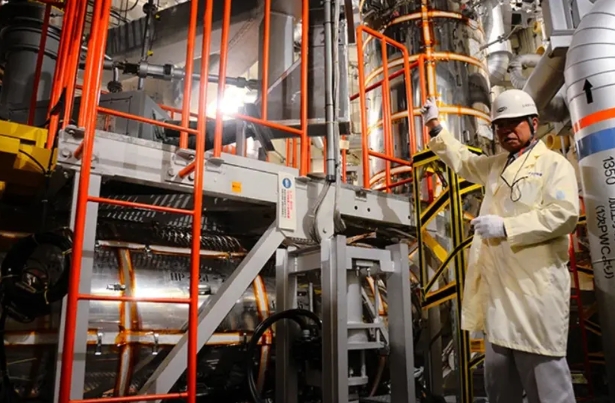
Masayuki Shinozaki, director-general of the Japan Atomic Energy Agency's HTGR Research and Development Center, gives a briefing on the equipment inside the containment vessel of the High Temperature Engineering Test Reactor (HTTR) in Oarai, Ibaraki Prefecture, on April 30, 2024.
On March 27, 2025, JAEA submitted a request for authorization to the Nuclear Regulation Authority to proceed with the project. Hydrogen is seen as a vital resource for achieving carbon neutrality, as it can be stored, transported, and used to generate electricity and heat without emitting carbon dioxide.
The HTTR, an experimental high-temperature gas-cooled reactor (HTGR), is expected to start hydrogen production in the second half of fiscal 2028. HTGRs are advantageous for this purpose because they generate heat at higher temperatures than conventional light-water reactors, enabling stable and large-scale hydrogen production.
JAEA plans to construct a hydrogen production facility near the HTTR, with underground piping to transfer high-temperature heat to the plant. While the production process may generate some carbon dioxide emissions, JAEA is also researching alternative methods to produce hydrogen without such emissions.
“The project aims to establish a reliable method for connecting the HTTR to the hydrogen production facility,” said JAEA officials. “This will lay the groundwork for future advancements in hydrogen production technology.”
The Japanese government supports the development of a larger demonstration HTGR, anticipated to begin operations in the late 2030s. JAEA intends to use the knowledge gained from the HTTR project to inform the design and operation of this future reactor.
By leveraging the HTTR’s capabilities, JAEA aims to pioneer a sustainable approach to hydrogen production, contributing to global efforts to reduce carbon emissions. The agency’s focus on refining this technology underscores its commitment to advancing clean energy solutions.